When Wu Chin-yeh (吳金曄) started her training to become a hot air balloon pilot in Utah earlier this year, it was anything but easy.
“There were times when I had to deal with cattle after I was forced to land on grazing lands,” the 29-year-old Taiwanese said.
However, Wu tackled the challenges and became Taiwan’s first female hot air balloon pilot and the first person in the country to obtain both a US and a Taiwanese pilot license.
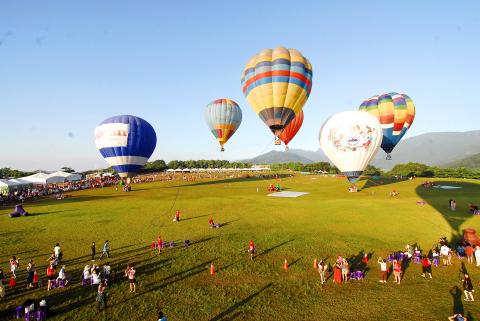
Photo: CNA
She was also the face of the recently concluded Taiwan Balloon Festival in Taitung County.
“As a Taitung native, I was thrilled to show tourists a view of my hometown from above,” she said.
The carnival, which ran from June 26 to Sept. 2, and showcased 160 exhibition flights by 21 balloons from 13 countries, was by all accounts a success.
However, Taitung County’s ambitions go far beyond organizing the popular festival. The county is hoping to position itself as a year-round “hot air balloon paradise” to add to an economy already dependent on tourism.
“We have established Taitung as the home of hot air ballooning through the festival, and the next step is to build on its success to establish a market,” said Chen Shu-hui (陳淑慧), director of the county’s Culture and Tourism Department.
Lin Wei-ling (林維玲), deputy director of the East Coast National Scenic Area, said developing this niche market is strategically important to the county’s tourist sector.
“We want specialty tourism because traditional sightseeing can no longer meet the demands of either domestic or foreign tourists,” Lin said. “To meet that goal, we need a huge market and clear rules and regulations.”
This year’s festival was a good start, drawing 850,000 visitors, more than twice the number of visitors at last year’s inaugural festival.
It generated revenues of NT$20 million (US$670,000) and helped inject NT$1.2 billion into the county’s economy, Chen said.
About 20,000 people paid NT$500 to go up in tethered hot-air balloons — which are attached to the ground and fly straight up. These rides were very popular with visitors.
“The balloons were only part of the memorable experience — there were others like counting the stars, feeling the breeze, experiencing a sort of dreamlike atmosphere,” said 26-year-old Elise Chen, who climbed into the basket of a balloon during the festival.
Twenty-seven men successfully proposed to their girlfriends during balloon flights, while thousands of Internet users posted stories about their experiences on the event’s Facebook page, according to the organizers.
Five Taitung County-sponsored Taiwanese pilots who received training in the US, including Wu, made their debut at the festival to promote hot air ballooning in the area.
However, what they were not able to do was take passengers on regular hot-air balloon rides over the Taitung countryside, even though the festival organizers had advertised such rides. Taiwan’s aviation regulator, the Civil Aeronautics Administration (CAA) only granted permits for tethered flights and non-passenger exhibition flights during the festival. This is the main hurdle Taitung faces in making hot air ballooning a regular pastime.
For the hot air balloon industry to flourish, it must be further commercialized rather than rely on government-promoted events like the festival, which means loosening existing regulations, Lin said.
“We want the CAA to reserve an open sky on a year-round basis with fewer restrictions for hot air ballooning,” Chen said.
Hsiung Shih-ping, an official with the CAA’s Planning, Legal and International Affairs Division, said the idea was feasible.
“It’s possible that we open an 18km long air corridor along the Rift Valley, as long as all the balloons are outfitted with standard communications equipment,” she said, adding that other adjustments would also need to be made to avoid overcrowding air lanes in the region.
In addition, a more detailed regulatory framework for the hot air ballooning industry needs to be finalized before it can be classified as a general aviation business in Taiwan, legally conducting tours and serving passengers.
There are other issues that need to be resolved, such as building infrastructure suitable for the activity and training local pilots, challenges the Tourism Bureau and Taitung County intend to tackle together.
A NT$101 million pilot training school is being planned on the site of an abandoned elementary school, where the country’s first group of licensed pilots are expected to train others.
“We want to train our own pilots to make the industry truly sustainable,” said Wu Chih-wei, a pilot who is expected to take charge of the school’s future operations.
Suitable takeoff and landing spots also need to be identified, which may require the county to negotiate with farmers over the use of land.
He said that aggressive initiatives from the public sector would help boost private interest in investing in related businesses, such as sports insurance and dealership, and expedite the development of necessary services.
Wu said the county’s long-term goal is to promote year-round hot-air ballooning and to make the festival competitive with Japan’s Saga International Balloon Fiesta — the world’s second-largest ballooning carnival that hosts over 100 balloons every year.
For now, progress is being made on the regulatory front.
An official with the CAA’s Flight Standards Division said a complete regulatory standard is likely to be established by the end of this year which would create favorable conditions for commercial passenger ballooning.
That is good news to ballooning fans like Elise Chen, who said her one ride in the tethered hot-air balloon was simply not enough.
“The excitement in traveling with a hot air balloon lies in that you can fly up into a sky of unknown wonders,” she said. “To me, that is the Taiwanese version of Disneyland.”
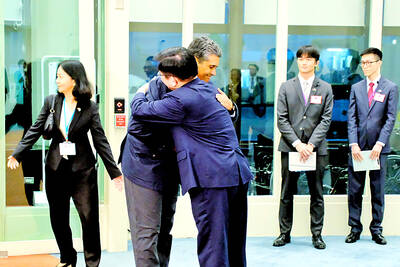
Palauan President Surangel Whipps Jr arrived in Taiwan last night to kick off his first visit to the country since beginning his second term earlier this year. After arriving at Taoyuan International Airport at around 6:30 pm, Whipps and his delegation were welcomed by Minister of Foreign Affairs Lin Chia-lung (林佳龍). Speaking to gathered media, the Palauan leader said he was excited and honored to be back in Taiwan on his first state visit to Taiwan since he was sworn in this January. Among those traveling with Whipps is Minister of State Gustav N. Aitaro, Public Infrastructure
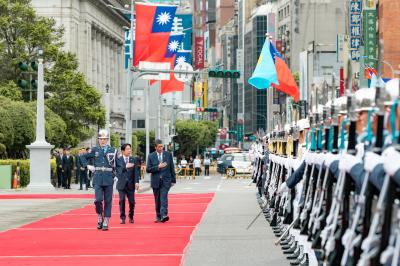
President William Lai (賴清德) yesterday thanked Palau for its continued support of Taiwan's international participation, as Taipei was once again excluded from the World Health Assembly (WHA) currently taking place in Switzerland. "Palau has never stopped voicing support for Taiwan" in the UN General Assembly, the WHO and other UN-affiliated agencies, Lai said during a bilateral meeting with visiting Palau President Surangel Whipps Jr. "We have been profoundly touched by these endorsements," Lai said, praising the Pacific island nation's firm support as "courageous." Lai's remarks came as Taiwan was excluded for the ninth consecutive year from the WHA, which is being held in
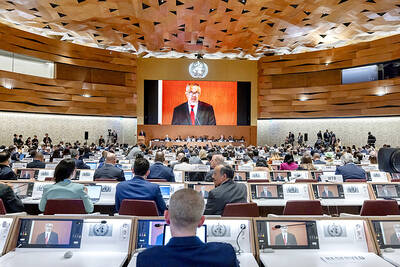
RESOLUTIONS DEBATE: Taiwan’s allies said that UN and WHA resolutions cited by China and other nations ‘do not determine Taiwan’s participation in WHO activities’ A proposal to invite Taiwan to this year’s World Health Assembly (WHA) was rejected on Monday, resulting in Taipei’s absence from the annual meeting for a ninth consecutive year, although partners spoke up for Taiwan’s participation at the first day of the meeting. The first agenda item after the opening was a “two-on-two debate” on a proposal to invite Taiwan to participate at the WHA as an observer. Similar to previous years, two countries made statements in favor of the proposal, while two others expressed their opposition. Philippine Secretary of Health Teodoro Herbosa, president of the 78th WHA, accepted the WHA General Committee’s
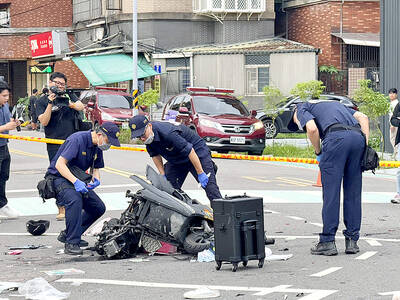
At least three people died and more than a dozen were injured yesterday afternoon when a vehicle struck a group of pedestrians in New Taipei City’s Sansia District (三峽). The incident happened at about 4pm when a car rammed into pedestrians at an intersection near Bei Da Elementary School. Witnesses said the sedan, being driven at a high speed, ran a red light, knocking scooters out of the way and hitting students crossing the road before careening into a median near the intersection of Guocheng and Guoguang streets. The incident resulted in three deaths and 13 injuries, including the driver, a 78-year-old man